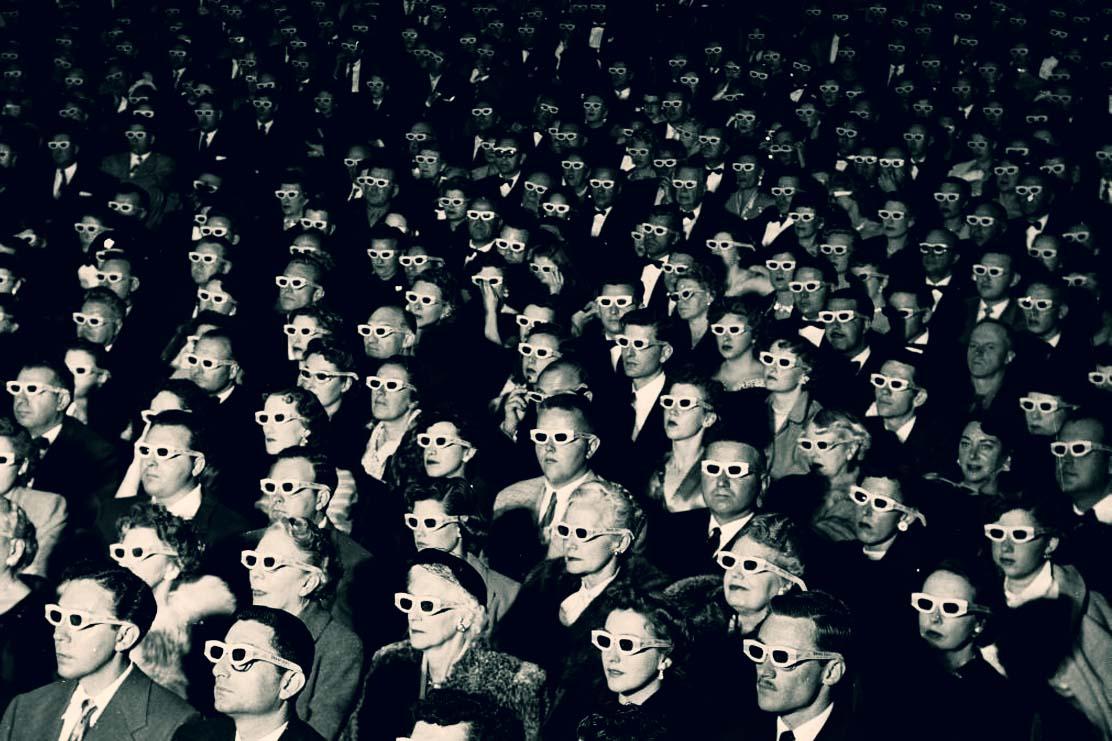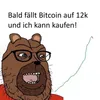I took the orangepill in June 2021 and spent until July passing on what I had understood to family and friends. I felt I should share what prompted me to change my strategy quickly, as I felt that the market could destabilize at any moment, the price of Bitcoin start to skyrocket and bankruptcies and possible wars start to skyrocket the prices of the products that reached the consumers.
In the first week I told it to an architect friend whom I hold dear. He had already done his research in the world of cryptocurrencies and had a portfolio with less volume than he had already taken profits to pay for surf trips. He shared with me the Situationist Manifesto, written by Guy Debord in the year 1960, something that was quite far from my search areas. In case the reader hasn't read the manifest, I recommend reading it before continuing with this article, it's better to receive the inputs for the first time without a reference to focus from.
In my case, I immediately align the crisis described with the transition to which I believe Bitcoin is leading us. I would like to organize my explanation in five points: Property, Time, Artists, Culture, Theory of Value.
1. Property
Bitcoin replaces the dollar as a reserve and trade currency. The state is out of the game for not being able to confiscate, without funding for the instruments that guarantee security and property, we cannot expect citizens to oppress themselves and respect the old social conventions. Of course, at some point there is a winner or a territory decides to organize itself peacefully, but if now this group that calls itself the government manages to finance itself, it will be privately. The word public as it is understood in Economics disappears when there is no agent who can confiscate. In the same way, if someone decides voluntary to contribute to an organization, it cannot be called a tax, since there is no longer a way to impose confiscation. In a model where this form of "soft violence" such as confiscation does not exist, it remains to be seen if the new laws created by the new government will respect private property as it is currently understood.
In those cities where a land-owning group seizes power and imposes its laws, there will continue to be a model like the current one where some individuals must spend part of their day generating resources that they must deliver to that group. But in those cities where the group that seizes power does not impose ownership over the land, it will experience a change in the behavior of all citizens because the incentives have changed. We consider that everything that the individual spends can be classified between Shelter, Food and Leisure. Understanding leisure as all those wills that have nothing to do with the survival of the individual. If the individual no longer has to generate resources to have a refuge, they can have more time and decide where to spend it. To generate enough food that an individual needs in a month, 40 hours a week may not be required with a functioning economy, even at a local level. Without ownership, preferences and incentives change, bringing the economy to new equilibrium.
2. Time
The individual has physiological needs that must be satisfied for their survival. He also has threats in the real world that condition his behavior and usually lead him to seek a sense of protection. Once you have satisfied these needs, you are no longer thinking about surviving, you are thinking about living. From here come the three blocks referring to individual expenses from the previous section.Time is the only resource that the individual really has and it is a limited resource. Hence, we are forced to dedicate part of the time to survival and the rest to seek to maximize well-being or pleasure. A slave is understood as a non-free individual since it is owned by another individual. Ownership stems from a social contract, perhaps only between those two individuals if one gets the other to accept that idea and internalize it. In fact, being a slave means that an individual has no time to spend maximizing his well-being or pleasure. Beyond the individual's understanding of his life, what really matters is what he does with the time he has available. It is for this reason that the monetary issue is a scam for individuals who suffer the consequences in the form of inflation, they are devaluing their time causing them to dedicate more resources to survival than to experience.
The aim of a society should be to provide as much free time as possible for its inhabitants. Each individual has different wills and preferences and must dedicate their time to satiating those that they prefer the most. Without a property-based model, the individual should not be generating resources to hand over to landlords and may have that time for other activities. Those individuals who focus their time, resources, and energy on the pursuit of virtue are what I consider to be artists. If we see a change in the economic balance, artists will have more time for Leisure and will have to dedicate less time to survival.
3. Artists
Situationists, like most avant-garde movements, go against the idea that we find art in an exhibitor. Similarly, the artist is not a special person, but all individuals can be artists. It is this acceptance that art is in everything that causes the very devaluation of art as previously understood. Being an artist any individual who believes seeking virtue, his art can be considered pure when the artist creates what he wants to express. It is very different when the artist must manage to survive and offer his services to the market in exchange for remuneration. In this case, with his talent, he creates something that the market wants to be expressed, but these ideas are not the artist's own. If artists stop having so many payment obligations, they will be able to spend more time producing their art instead of what the market demands of them. This leads us to a scenario where there will be more productions, more artists and therefore an explosion of creativity that can help other fields such as technology.
4. Culture
This point may be the most emblematic of the manifesto's proposal, attacking art conservation, connecting it directly with the need to leave a mark. The authors associate the two concepts from the offer, due to the total participation of individuals, a collective and anonymous production would tend. I find it very interesting how they present that the Novelty disappears, I still do not dare to give my points on these perceptions of time.This total participation occurs when passive leisure ends, passive leisure understood as the relationship between artist as producer and spectator as consumer. With the fall of the instruments that guarantee private property based on violence, the new property-free societies will be able to dedicate their time to the creation of a new culture and can decide to what extent they will respect the culture of the previous model. I am not maintaining that the past culture should be destroyed, I only doubt that it is more valuable than the new culture that is being generated. Present generations cannot be expected to destroy past culture and expect future generations to respect their creations.
Attacking the conservation of art seems to me a Socratic argument, who attacked the repetition of the same play for spreading ideology about the individuals of the polis. I find it interesting how the conservation of art and politics are related, since it is through culture that the ideas in politics expand, which are the ones that end up determining who controls the territory and resources. For this reason, the creation of art without seeking its conservation seems to me to be a pure art, without market or social incentives, since it does not seek to convince any ideology. This is the archetypal relationship between Ulysses and Achilles about glory and the concept of ''Leaving a mark'', in each city there will be a different collective opinion about it and the previous culture will be more or less respected and contemporary culture will be produced differently.
5. Theory of Value
Bitcoin, in my opinion, shows me that the Austrians were right in the way they understood value. A marginal value theory that resolves the diamond and water paradox shows me that value is a ratio and is constantly changing. It happens in the same way in the world of art where the value of work cannot be determined. It is a serious mistake to think that the value and the price go separately, that is the argument of those who understand that the value is generated from the offer and the market takes its value to an appreciation with which they do not agree. In art, as in any market, the product is worth as long as the demand sees some use in it. If producers now stop producing for consumers because they are no longer looking to sell their works, there may be a great mismatch in prices as they have been understood so far in the sector.
Let us remember that the producers no longer think about selling, since they do not need to enter to pay the group in power that dominates the property on the land. Now they will produce for the pleasure of producing, regardless of the sale, some artists may lose their reason for conservation.I find the way in which the situationists treat art very interesting, I wanted to understand that they describe the artist as the individual who creates with virtue in mind. In the crypto world they have based the value of NFTs on certification, bragging that the Blockchain allows the preservation of that verification. Understanding that certification, which is an important concept in a model supported by private property, would continue to be valuable in future models. Personally, at the moment I began to understand that Bitcoin would demonetize all its competitors, I understood that it would be the only Blockchain where it makes sense to register a work such as a text, a jpeg, etc... Thinking that this certification will give it value in the future is demonstrate not having understood that Value is a proportion, it has a dynamic nature, not a static one.
At the beginning of 2023, the creation of NFTs on Bitcoin thanks to Ordinals puts several debates on the table. From the artistic side, I think that it should be discussed whether the certification of content that has nothing to do with Bitcoin makes sense. Of course, if it is done looking for the permanence of that record, it does have it, since all the nodes that communicate in the same language as the one created by the NFT will have a copy of that information. If you come up with the idea of starting to register art to build a market on that register, I think that the inputs that the situationists leave us can help those individuals who are not clear about their opinion on the Achilles / Ulysses debate.
Saifdean's Bitcoin Standard book has had a great influence on my training as well as many plebs. It helps to understand the usefulness of Bitcoin by comparing it to gold, so it focuses on a monetary discussion rather than the technical aspects of the network. However, the author gives a personal opinion on contemporary art comparing it with Renaissance art. His point is that current producers seek to sell their product to the market and therefore seek to be efficient in production. Spend little time, few resources and seek to please the demand to obtain more sales. He compares it with how Renaissance artists produced in a more elaborate way looking for a better quality product. He accompanies it with the idea that these artists were financed by large families that could afford to invest those resources in the artists thanks to gold. I do not question any of this reasoning, I only want to criticize the boldness of the author to affirm that the Renaissance works were more valuable because they were produced seeking virtue.
The virtue in the world of sport can become objective, a runner is faster than another if he can cover a certain distance in less time. But in disciplines where there are judges, factors such as creativity or beauty are usually taken into account, which are full of subjective discussions. The same happens with art, whether it comes in a graphic, musical or scenographic format, no matter how much the production is looking for virtue or looking for sale, there is no way to differentiate the value of the useless beyond the collective appreciation. It comes to be the discussion among Rock lovers who criticize Techno or Reggaeton, daring to say that one music is better than another is to want to standardize tastes which is impossible.For this reason, I believe that the bitcoiner ecosystem should approach discussions about art in the same way that we discuss the theory of value, accept that there are no universal parameters. What is objective is to affirm that in a model based on consensus such as Bitcoin, incentives cannot be imposed that occupy the time of artists, so an increase in art production is to be expected. We cannot affirm that it will be an increase in culture, since we do not know if contemporary artists will have this fixation on the conservation of works and we do not know the position of each society regarding the conservation of past culture.





Related Posts
Is bitcoin island a trap?
Jun 25, 2024